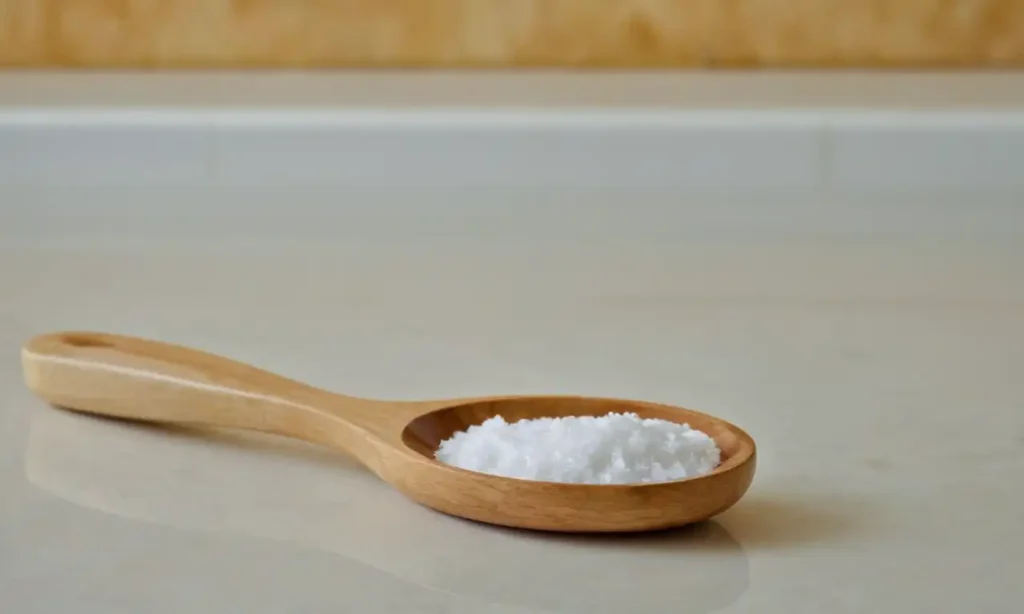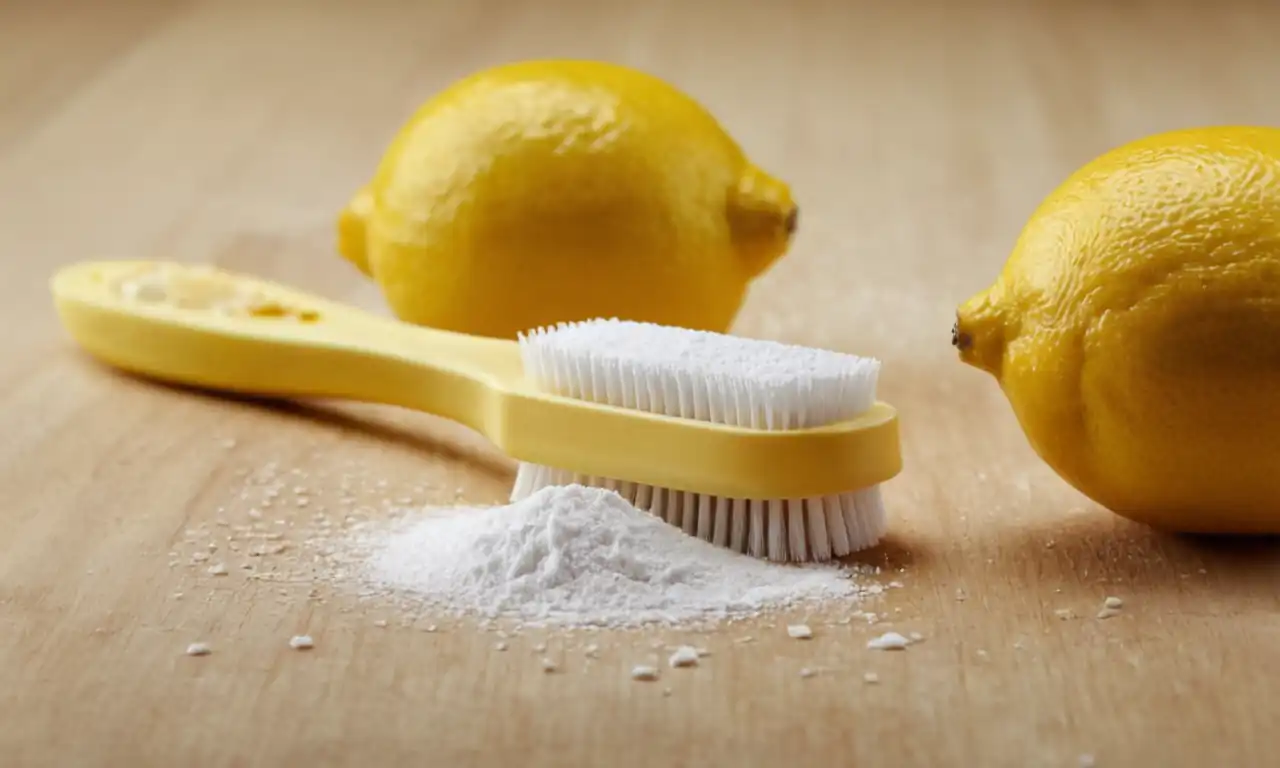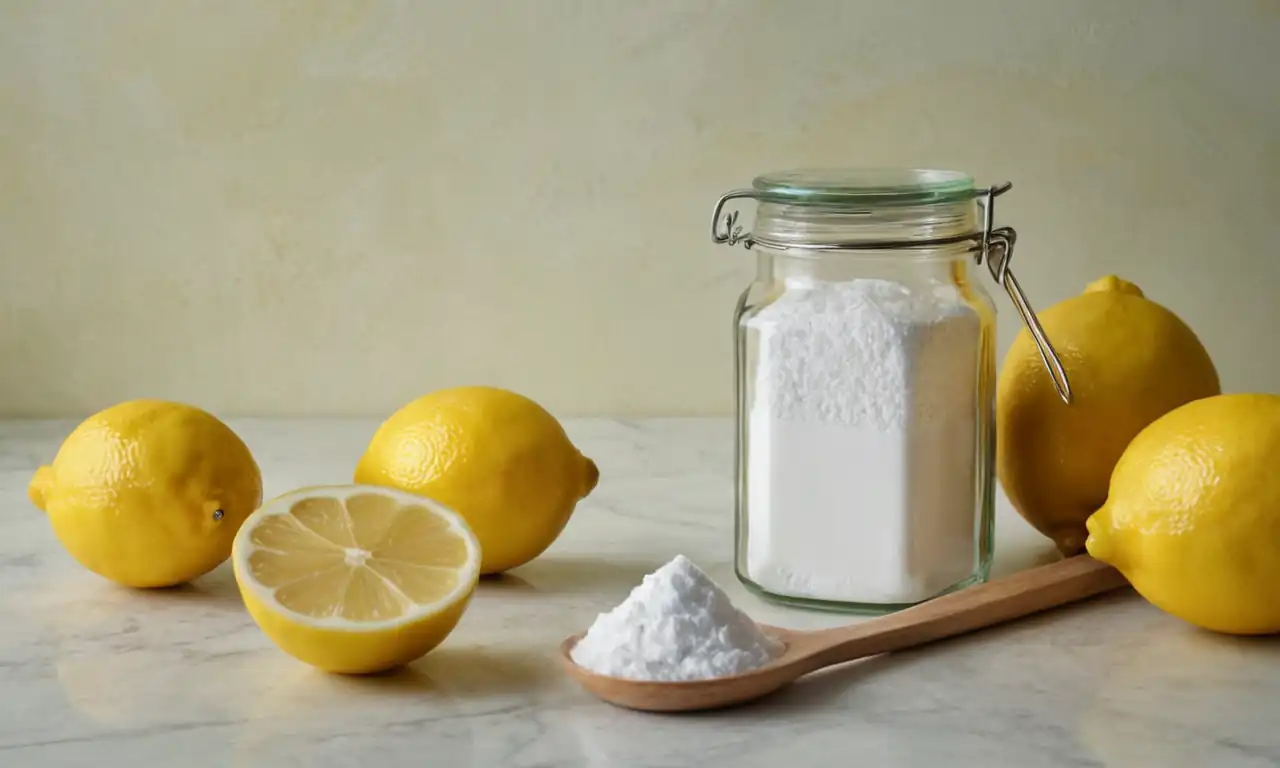Cómo blanquear los dientes en casa sin dañar el esmalte: Remedios naturales y seguros

- Técnicas seguras para blanquear los dientes en casa
- Ingredientes naturales para blanquear los dientes
- Métodos efectivos para blanquear los dientes sin dañar el esmalte
- Cómo evitar problemas comunes al blanquear los dientes
- Consejos para mantener la salud de tus dientes después del blanqueamiento
- Mantén una buena higiene dental
- Evita el uso de alimentos y bebidas agresivas
- Practica la fluorosis oral
- Visita regularmente al dentista
- Evita el uso de cepillos y pasta de dientes abrasivos
- Be gentle when flossing
- Mantén una dieta equilibrada
- Evita el estrés
- Cuida tus encías saludables
- Evita el uso de productos dentales inapropiados
- Preguntas frecuentes
- ¿Cómo sé si estoy adecuado para blanquear mis dientes en casa?
- ¿Qué tipo de pasta de dientes es más adecuada para blanquear los dientes?
- ¿Cómo debo almacenar mis productos de blanqueamiento dental?
- ¿Puedo combinar blanqueamiento dental con otros tratamientos dentales?
- ¿Hay riesgos de dañar el esmalte al blanquear mis dientes en casa?
- ¿Puedo blanquear mis dientes si tengo implantes dentales o prótesis?
- ¿Cómo debo mantener mis dientes después del blanqueamiento?
- ¿Puedo usar blanqueadores caseros para mi dentadura postiza?
Técnicas seguras para blanquear los dientes en casa

Uso de bicarbonato de sodio
El bicarbonato de sodio es un ingrediente natural que puede ayudar a blanquear los dientes. Mezcla 1 cucharada de bicarbonato de sodio con 2 cucharadas de agua para crear una pasta que puedes aplicar en tus dientes durante 5 minutos antes de lavarlos con agua fresca.
Enjuague con limón
El ácido cítrico presente en el limón puede ayudar a eliminar manchas y restos alimenticios del esmalte dental. Mezcla 1 cucharada de jugo de limón con 1 cucharada de agua y úsalo como enjuague para blanquear tus dientes.
Mascarilla de hierro
La madera de hierro natural contiene propiedades que pueden ayudar a blanquear los dientes. Mezcla 1 cucharada de polvo de madera de hierro con 2 cucharadas de agua y aplícala en tus dientes durante 5 minutos antes de lavarlos con agua fresca.
Uso de cloro
El cloro es un agente blanqueador natural que se encuentra en el agua clorada. Puedes agregar 1/4 cucharada de sal común a tu dentífrico para crear una combinación efectiva para blanquear tus dientes.
Fomento con hielo
El fomento con hielo puede ayudar a reducir la inflamación en los gingivitis y a blanquear los dientes. Puedes aplicar un cubo de hielo en tu lengua durante 5 minutos para relajar tus encías y blanquear tus dientes.
Enjuague con vinagre
El ácido acético presente en el vinagre puede ayudar a eliminar manchas y restos alimenticios del esmalte dental. Mezcla 1 cucharada de vinagre blanco con 1 cucharada de agua y úsalo como enjuague para blanquear tus dientes.
Uso de aceite de oliva
El aceite de oliva es un ingrediente natural que puede ayudar a blanquear los dientes. Mezcla 1 cucharada de aceite de oliva con 2 cucharadas de agua y úsalo como enjuague para blanquear tus dientes.
Fomento con apio
El apio contiene propiedades que pueden ayudar a blanquear los dientes. Puedes aplicar un cubo de apio fresco en tu lengua durante 5 minutos para relajar tus encías y blanquear tus dientes.
Recuerda siempre seguir las instrucciones correctamente y consultar con un dentista antes de iniciar cualquier tratamiento para blanquear tus dientes.
Ingredientes naturales para blanquear los dientes

Cebolla
La cebolla es rica en antibióticos y antisépticos que pueden ayudar a blanquear los dientes. Puedes masticar una cucharada de cebolla fresca durante 5 minutos antes de lavar tus dientes con agua fresca.
Ajo
El ajo contiene propiedades que pueden ayudar a reducir el mal aliento y blanquear los dientes. Puedes masticar un cubo de ajo fresco durante 2-3 minutos antes de lavar tus dientes con agua fresca.
Menta
La menta es rica en flavonoides que pueden ayudar a blanquear los dientes y reducir el riesgo de enfermedades bucales. Puedes agregar una cucharada de extracto de menta a tu dentífrico para crear un blanqueador natural.
Zumo de pomelo
El zumo de pomelo contiene ácido cítrico que puede ayudar a eliminar manchas y restos alimenticios del esmalte dental. Puedes beber un vaso de zumo de pomelo fresco después de cada comida para mantener tus dientes limpios.
Avena
La avena es rica en antioxidantes que pueden ayudar a proteger el esmalte dental y blanquear los dientes. Puedes agregar una cucharada de polvo de avena a tu dentífrico para crear un blanqueador natural.
Hierbas
Las hierbas como la salvia, la menta y la cúrcuma tienen propiedades que pueden ayudar a blanquear los dientes. Puedes agregar una cucharada de extracto de estas hierbas a tu dentífrico para crear un blanqueador natural.
Aceite de coco
El aceite de coco es rica en ácidos grasos saturados que pueden ayudar a blanquear los dientes. Puedes aplicar una gota de aceite de coco en tus dientes y luego lavarlo con agua fresca para crear un blanqueador natural.
Extracto de tomillo
El extracto de tomillo tiene propiedades antibacterianas que pueden ayudar a reducir el mal aliento y blanquear los dientes. Puedes agregar una gota de extracto de tomillo a tu dentífrico para crear un blanqueador natural.
Miel
La miel es rica en antioxidantes que pueden ayudar a proteger el esmalte dental y blanquear los dientes. Puedes aplicar una cucharada de miel en tus dientes y luego lavarlo con agua fresca para crear un blanqueador natural.
Recuerda siempre seguir las instrucciones correctamente y consultar con un dentista antes de iniciar cualquier tratamiento para blanquear tus dientes.
Métodos efectivos para blanquear los dientes sin dañar el esmalte
Rinsing with Hydrogen Peroxide
Rinse your mouth with a solution of hydrogen peroxide and water for 30 seconds to help remove surface stains and whiten your teeth. Mix equal parts of hydrogen peroxide and water and swish it around your mouth before spitting it out.
Brushing with Baking Soda
Brush your teeth with baking soda and water to help remove plaque and surface stains. Mix one teaspoon of baking soda with two teaspoons of water to create a paste, then brush your teeth for 2 minutes before rinsing.
Using Essential Oils
Certain essential oils like peppermint, eucalyptus, and tea tree oil have antibacterial properties that can help whiten teeth naturally. Apply a few drops of the essential oil to your toothbrush and brush your teeth as usual.
Whitening Toothpaste
Use a whitening toothpaste that contains mild abrasives and gentle cleaning agents to help remove surface stains and whiten teeth. Look for a toothpaste that has the American Dental Association (ADA) seal of approval.
Oil Pulling
Oil pulling involves swishing coconut oil or sesame oil in your mouth for 5-10 minutes before spitting it out. This method helps remove bacteria and toxins from your mouth, leaving your teeth whiter and shinier.
Saltwater Rinse
Rinse your mouth with warm salt water to help reduce inflammation and remove surface stains. Mix one teaspoon of salt with eight ounces of warm water and swish it around your mouth before spitting it out.
Lemon Juice
Apply a small amount of lemon juice to your toothbrush and brush your teeth as usual. The acidity in the lemon juice helps break down stains and whiten teeth naturally.
Activated Charcoal
Use activated charcoal powder or toothpaste to help remove impurities and surface stains from your teeth. Mix one teaspoon of activated charcoal with two teaspoons of water to create a paste, then brush your teeth for 2 minutes before rinsing.
Remember to always consult with a dentist before starting any new oral care routine, especially if you have sensitive teeth or gums.
Cómo evitar problemas comunes al blanquear los dientes
Sensibilidad dental
To avoid sensitivity, start with a gentle whitening solution and gradually increase the concentration if needed. Also, be gentle when brushing your teeth to prevent enamel erosion.
Gum recession
Avoid using abrasive whitening products that can wear away gum tissue. Instead, opt for gentle, non-abrasive formulas or consult with a dentist for personalized recommendations.
Enamel damage
To prevent enamel damage, avoid using harsh chemicals or abrasive products on your teeth. Instead, stick to natural remedies like baking soda and lemon juice.
Over-bleaching
Don't overdo it when whitening your teeth. Start with a mild solution and gradually increase the strength as needed. Avoid leaving whitening agents on for extended periods.
Tooth decay
Regularly brush and floss your teeth to prevent tooth decay, which can be exacerbated by whitening agents. Use a fluoride toothpaste and schedule regular dental check-ups.
Gum inflammation
To avoid gum inflammation, use a gentle whitening solution that is specifically designed for sensitive gums. Also, rinse your mouth with water after whitening to remove any excess product.
Bad breath
To prevent bad breath when whitening your teeth, make sure to rinse your mouth thoroughly after treatment. You can also chew sugar-free gum or brush your tongue and the roof of your mouth to remove bacteria.
Dull teeth
To avoid dull teeth, use a gentle whitening solution that is designed for sensitive teeth. Avoid using abrasive products or harsh chemicals that can strip away enamel.
Irritation
If you experience irritation or discomfort while whitening your teeth, discontinue use and consult with a dentist. They can recommend alternative treatments or provide guidance on how to proceed.
Inconsistent results
To achieve consistent results, follow the instructions carefully and avoid using too much product or leaving it on for extended periods. Regularly schedule dental check-ups to monitor your progress.
By following these tips, you can minimize the risk of common problems associated with teeth whitening and enjoy a brighter, healthier smile.
Consejos para mantener la salud de tus dientes después del blanqueamiento
Mantén una buena higiene dental
Brush your teeth at least twice a day with a fluoride toothpaste and pay special attention to the areas around your fillings, crowns, and dental work.
Evita el uso de alimentos y bebidas agresivas
Avoid consuming foods and drinks that can stain or damage your teeth, such as coffee, tea, and red wine. Instead, opt for water, milk, and sugar-free gum.
Practica la fluorosis oral
Use a fluoride mouthwash or rinse with a fluoride solution to help strengthen your tooth enamel and prevent decay.
Visita regularmente al dentista
Schedule regular check-ups with your dentist to monitor the health of your teeth and gums. They can catch any potential problems early on and provide personalized advice for maintaining your oral health.
Evita el uso de cepillos y pasta de dientes abrasivos
Avoid using abrasive toothbrushes or toothpaste, as they can wear away your tooth enamel and cause sensitivity.
Be gentle when flossing
When flossing, be gentle and avoid using excessive force, which can damage your gums and tooth enamel.
Mantén una dieta equilibrada
Eat a balanced diet rich in fruits, vegetables, and whole grains to help keep your teeth and gums healthy. Avoid sugary snacks and drinks that can contribute to decay and other oral health issues.
Evita el estrés
Manage stress levels by practicing relaxation techniques such as meditation, yoga, or deep breathing exercises. Stress can contribute to teeth grinding and jaw clenching, which can damage your teeth and gums.
Cuida tus encías saludables
Gently massage your gums with a soft-bristled toothbrush to stimulate blood flow and promote healthy gum tissue.
Evita el uso de productos dentales inapropiados
Avoid using products that are not specifically designed for dental use, such as mouthwashes or gels intended for skin care. These can contain ingredients that are harmful to your teeth and gums.
By following these tips, you can maintain the health of your teeth after whitening and enjoy a long-lasting, radiant smile.
Preguntas frecuentes
¿Cómo sé si estoy adecuado para blanquear mis dientes en casa?
If you have sensitive teeth, gum recession, or other oral health issues, consult your dentist before attempting to whiten your teeth at home. They can help determine the best course of treatment for your specific needs.
¿Qué tipo de pasta de dientes es más adecuada para blanquear los dientes?
Look for toothpaste containing mild abrasives and gentle whitening agents, such as baking soda or peroxide. Avoid using harsh chemicals or abrasive materials that can damage your teeth.
¿Cómo debo almacenar mis productos de blanqueamiento dental?
Keep your whitening products in a cool, dry place to preserve their potency and effectiveness. Always follow the manufacturer's instructions for storage and usage.
¿Puedo combinar blanqueamiento dental con otros tratamientos dentales?
Consult with your dentist before combining whitening treatments with other oral health procedures, such as fillings or crowns. They can help determine the best approach for your specific needs.
¿Hay riesgos de dañar el esmalte al blanquear mis dientes en casa?
When using whitening products, be cautious not to overdo it, as excessive use can lead to tooth sensitivity and enamel wear. Always follow instructions and take necessary precautions to avoid damaging your teeth.
¿Puedo blanquear mis dientes si tengo implantes dentales o prótesis?
Consult with your dentist or prosthodontist before whitening your teeth if you have dental implants, crowns, or other restorative work. They can help determine the best approach for maintaining the health and appearance of your teeth.
¿Cómo debo mantener mis dientes después del blanqueamiento?
To maintain the results of your at-home whitening treatment, practice good oral hygiene habits, avoid consuming stain-causing foods and drinks, and schedule regular dental check-ups to monitor the health of your teeth.
¿Puedo usar blanqueadores caseros para mi dentadura postiza?
Consult with your dentist or prosthodontist before using at-home whitening products for your dentures. They can help determine the best approach for maintaining the health and appearance of your dental appliances.
Deja una respuesta
Entradas relacionadas